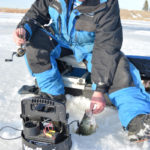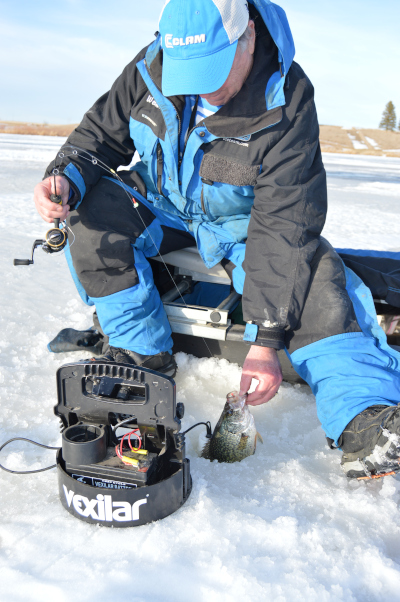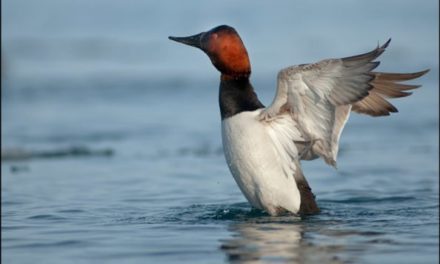
 The more that I learn about ice fishing, the more I learn that I have a lot more to learn about ice fishing. And I’m okay with that. When an angler starts to think they know all there is to know about ice fishing(or open water fishing), that’s when they start to plateau as an angler. When they think there’s nothing else to learn, they don’t try to learn new techniques related to fishing. I’ve had the privilege to fish with some of the most successful anglers in the fishing business, and I’ve so often heard those outstanding anglers say while we were fishing, “Well that’s something new to me,” or “I’ve never seen a fish do that before.” We can learn a lot about fishing just from conversations with other anglers.
The more that I learn about ice fishing, the more I learn that I have a lot more to learn about ice fishing. And I’m okay with that. When an angler starts to think they know all there is to know about ice fishing(or open water fishing), that’s when they start to plateau as an angler. When they think there’s nothing else to learn, they don’t try to learn new techniques related to fishing. I’ve had the privilege to fish with some of the most successful anglers in the fishing business, and I’ve so often heard those outstanding anglers say while we were fishing, “Well that’s something new to me,” or “I’ve never seen a fish do that before.” We can learn a lot about fishing just from conversations with other anglers.
Let’s consider ice fishing rods for a minute. I was speaking with an ice angler recently and learned that he had rods that he used when fishing inside a shelter, and other rods for outside the shelter. This guy is a very accomplished ice angler and understands that not everyone needs different rods for inside or outside, but his thoughts on selecting a rod are applicable if you fish outside mostly or inside mostly.
Some people prefer shorter rods for fishing inside. They don’t knock the tip of the rod against the shelter as much with the short rod when fishing inside. But my fishing friend considers more than just rod length when deciding what rod to use. In addition to length and action, he looks at the size of the guides. Going to larger guides helps reduce ice build-up in the guides and that’s a consideration when fishing outside. But when fishing inside, it’s usually warmer and build-up isn’t as much of a factor. For fishing inside, my friend likes a rod with smaller guides that are closer to the rod blank. He feels that these are more sensitive and impart more action on a lure. The size of the guide on your rod is a consideration that many haven’t thought of, but for those that do, the catching is usually better.
Another friend likes a longer rod with more bend throughout the entire rod, not just bend in the tip. He thinks that a longer rod with softer tip reveals strikes better visually. The longer, softer rod bends easier and the fish don’t feel resistance. A shorter rod that doesn’t bend so much gives some resistance to the fish that’s trying to eat the bait, and sometimes when the fish are finicky, when they feel resistance, they spit the bait.
Last thing: Some people didn’t like spring bobbers when they first came out. They couldn’t explain why, they just didn’t like’em. Many of those same anglers today have changed their tune regarding spring bobbers. There are times when a spring bobber on the rod will put fish on the ice. One of those times is when the fish are feeding “up.” We’ve all been trained to understand that when the bobber goes down, it’s time to reel in a fish. We can understand that a fish has taken our bait and is swimming away. That’s why the bobber goes down.
However, much of the time when ice fishing, we’re using very small baits. Jig sizes of 1/32nd ounce aren’t uncommon. Spring bobbers are very sensitive, and these tiny jigs will cause the spring bobber to go down a bit. But when a soft-biting fish takes the bait and doesn’t swim away as they often do in the winter, the pressure on the bobber is released and it goes up. That’s also a cue to set the hook. When the bobber goes up, set the hook.
However, whenever, wherever you fish, there is always something to learn. When you decide there’s nothing else to learn, that’s when you stop growing as an angler.
Photo Caption—This light-biting crappie was detected by the spring bobber on the end of Steve Weisman’s ice rod.
The post LEARNING MORE ABOUT ICE FISHING appeared first on OutDoors Unlimited Media and Magazine.















